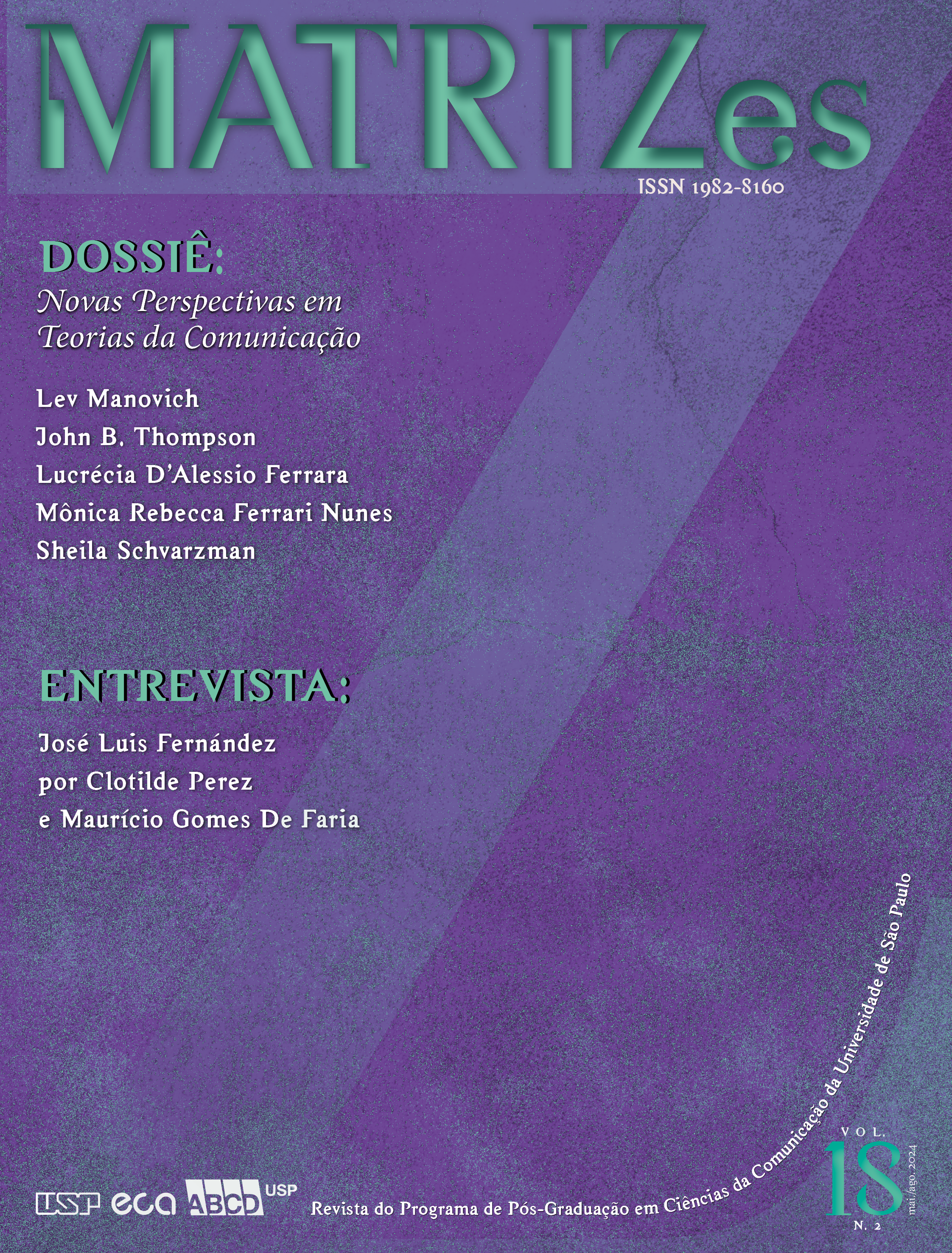Separate and Reassemble: Generative AI through the lens of art and media histories
DOI:
https://doi.org/10.11606/issn.1982-8160.v18i2p7-18Keywords:
AI image generation, digital media, neural networks, computer graphics, generative AIAbstract
AI image generation represents a logical evolution from early digital media algorithms, starting with basic paint programs in the 1970s and advancing to sophisticated 3D graphics and media creation software by the 1990s. Early algorithms struggled to simulate materials and effects, but advances in the 1970s and 1980s led to realistic simulations of natural phenomena and artistic techniques. Generative AI continues this trend, using neural networks to combine and interpolate visual patterns from extensive datasets. This method of digital media creation underscores the modular and discrete nature of computer-generated imagery, distinguishing it from traditional optical media.
Downloads
References
ACM SIGGRAPH. (2022). SIGGRAPH ‘22: ACM SIGGRAPH 2022 Conference Proceedings.
Barla, N. (2024, May 14). How to visualize deep learning models. Neptune.ai. https://neptune.ai/blog/deep-learning-visualization.
Bokov, A. (2014). VKhUTEMAS training. Pavilion of the Russian Federation at the 14th International Architecture Exhibition.
Bokov, A. (2021). Avant-garde as method: Vkhutemas and the pedagogy of space, 1920-1930. Park Books.
Corel Painter. (2024, July 5). In Wikipedia. https://en.wikipedia.org/wiki/Corel_Painter.
Manovich, L. (1992). Assembling reality: Myths of computer graphics. Afterimage, 20(2), 12-14.
Manovich, L. (2002). The language of new media. MIT press.
Manovich, L. (2013). Software takes command. Bloomsbury Academic.
Manovich, L. (2018). AI aesthetics. Strelka Press.
Mitchell, W. J. (1996). City of bits: Space, place, and the Infobahn. MIT press.
Olah, C., Mordvintsev, A., & Schubert, L. (2017, November 7). Feature visualization: How neural networks build up their understanding of images. Distill. https://doi.org/10.23915/distill.00007.
Podell, D., English, Z., Lacey, K., Blattmann, A., Dockhorn, T., Müller, J., Penna, J., & Rombach, R. (2023). SDXL: Improving latent diffusion models for high-resolution image synthesis. arXiv. https://arxiv.org/abs/2307.01952.
Smith, A. R. (2001). Digital paint systems: An anecdotal and historical overview. IEEE Annals of the History of Computing, 23(2), 4-30. https://doi.org/10.1109/85.929908.
Smith, A. R. (2021). A biography of the pixel. MIT Press.
Vkhutemas. (2020, June 25). Main course. https://www.vkhutemas.ru/en/structure-eng/faculties-eng/main-course/
Downloads
Published
Issue
Section
License

This work is licensed under a Creative Commons Attribution-NonCommercial-ShareAlike 4.0 International License.
Authors who publish in this journal agree to the following terms:
- Authors retain the copyright and grant the journal the right to first publication, with the work simultaneously licensed under the Creative Commons Attribution License (CC BY-NC-SA 4.0) which allows sharing of the work with acknowledgment of authorship and initial publication in this journal for non-commercial purposes.
- Authors are authorized to assume additional contracts separately, for non-exclusive distribution of the version of the work published in this journal (eg, publishing in institutional repository or as a book chapter), with acknowledgment of authorship and initial publication in this journal.






















